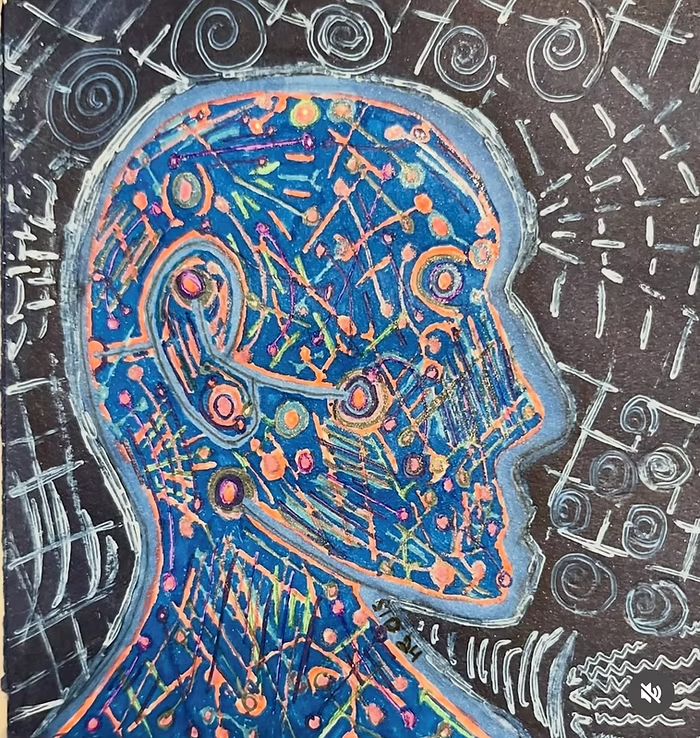As EMDR therapists working with clients who have Dissociative Identity Disorder (DID) or complex dissociative systems, Phase II resourcing isn’t just a step—it’s the foundation. While the “calm safe place” is a staple in EMDR prep work, it often falls short for clients who live with dissociative systems shaped by chronic, early trauma. To meet these clients where they are, we must go deeper.
You may be asking why tamper with something that is already evidence based and effective. To those wondering this, I believe that everything can be improved, and also, I’m an EMDR therapist who lives as a dissociative system. We were diagnosed in 2002 with DID and have spent the last 20+ plus years healing and learning how to help others heal.
In this post, I’ll outline an expanded Phase II resourcing protocol that integrates internal world development, interweaves ego state theory, IFS language, clinical hypnosis and system-specific resource mapping—a trauma-informed, collaborative way to support stabilization, safety, with strengthened internal supports.
Why Go Beyond the “Calm Safe Place”?
For clients with DID or complex dissociation, inner experiences can be chaotic, fragmented, or even dangerous. A single “safe place” might not feel accessible or inclusive to all parts. What one part experiences as safe, another may perceive as a threat. Therefore, our work must include not only creating internal resources—but also building internal infrastructure that honors the system’s complexity.
This protocol synthesizes Ego State Theory, Parts Work (IFS-informed), Clinical Hypnosis/Guided Imagery, Functional Multiplicity Model(s) to support system-wide co-regulation, autonomy, and collaboration—essential preconditions for trauma reprocessing.
The Protocol: Phase II Resourcing for DID Systems
1. Orient to the System
Before we begin resource development, we collaborate with the system. This includes identifying which parts are present, who needs support, and what concerns or barriers may exist.
Ask:
- “Who needs support right now?”
- “Is there someone inside who helps keep others safe?”
- “Are all parts okay with us doing this work today?”
Tools:
- Journaling
- Art-based mapping
- Narrative exercises
This work initiates internal trust-building and identifies the system’s immediate needs.
2. Create or Enhance an Inner World Safe Space
The internal world is often a pre-existing reality for dissociative systems. We help develop this world intentionally—with shared or separate spaces, protective features, and comfort items.
Elements Might Include:
- Separate rooms or hideaways for specific parts
- Group spaces (for eventual co-consciousness work)
- Safety tools (magic doors, walls, guardians)
- Soothing features (lights, blankets, pets, toys)
Ask:
- “Does anyone not feel safe here?”
- “What would help you feel safer?”
This stage validates differences in experience and needs while building shared space over time.
3. Develop Internal Resources
In complex systems, internal roles already exist but may be disorganized or unknown to the host. We identify and reinforce these roles with care.
| Type | Function |
| Protectors | Maintain safety and boundaries |
| Nurturers | Offer comfort and regulation |
| Helpers | Support communication & daily tasks |
| Wise Allies | Provide insight or spiritual support |
Ask:
- “Is there a part who already keeps others safe?”
- “Would they be willing to continue that role?”
Encourage role clarification through expressive arts. Some protectors may want to remain on guard during sessions. That’s okay—resourcing includes validating their vigilance and providing a place for them.
4. Promote Communication & Cooperation
A dissociative system benefits from structured inner communication. Over time, you can introduce the idea of internal meetings or a conference space where all voices are invited.
Tools Might Include:
- Internal intercom systems
- Visual message boards
- A “talking stick” ritual
- Assigning a “helper part” as moderator
Ask:
- “What would it feel like to hold a weekly system meeting?”
- “Who could help ensure all parts are heard?”
Creating inner governance leads to greater co-consciousness and trust—an essential piece of system stabilization.
5. Strengthen Grounding & Orientation Resources
Each part may need a different way to ground to the present. Anchors should be flexible, creative, and somatically rooted.
Ideas:
- A digital anchor (calendar reminder, lock screen message)
- “Where your feet are” exercises
- Temperature (ice cube, warm tea)
- Textures (stones, fidgets, soft fabric)
With BLS (as tolerated):Pair these anchors with slow bilateral stimulation to reinforce regulation and “here-and-now” awareness.
6. Support Switching & Transitions
Help the system normalize and regulate transitions between parts.
Ask:
- “If one part needs a break, who could step in?”
- “What helps you feel okay during switching?”
Creative Tools:
- Steering wheels
- Elevators
- “Body Bus” metaphor
- Slides, portals, light beams
This phase empowers the system to manage participation proactively and safely.
7. Install Resources with BLS (If Tolerated)
When safety and trust are sufficient, reinforce inner resources with slow, attuned BLS.
Install:
- Inner Safe Spaces
- Presence of Protectors/Nurturers
- Anchors and regulation strategies
Be cautious: Stop or pause if any part begins to feel overwhelmed. Installation is always collaborative—not forced.
8. Establish Emergency Resources
Even well-resourced systems need internal crisis protocols.
Create:
- A “Calming Room” inside
- A reliable protector who can “stay alert”
- A “Rescue Plan” or message to therapist
- Repeating mantras:
- “This is just a memory.”
- “We are safe in the now.”
- “Notice your anchor and breathe.”
Build these tools before processing begins. They are your client’s safety net.
Final Thoughts
Working with dissociative systems requires patience, creativity, and deep respect for internal complexity. Traditional “safe place” interventions rarely meet the depth of need in these clients. But by building layered, nuanced internal resources—with the system, not just the host—we lay a strong foundation for eventual trauma processing. And be willing to revisit this work as the system evolves through the healing work.
Whether you’re new to dissociation work or a seasoned trauma clinician, I hope this Phase II framework inspires you to think beyond scripts—and into systems, symbolism, and shared internal worlds. Remember, Phase II IS EMDR!





3 Responses
Thank you so much for this posting. It’s very validating to see steps I take in practice laid out in such a lovely and comprehensive way. It helps organize my brain. Any additional wisdom that can be shared on this topic is very welcomed by me, and I’m sure many others!
Love ❤️
Excellent article. Wish I could see a demonstration of how to support switching or transitions being used to better understand.